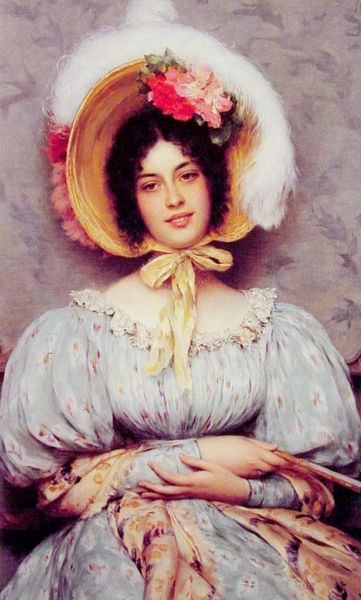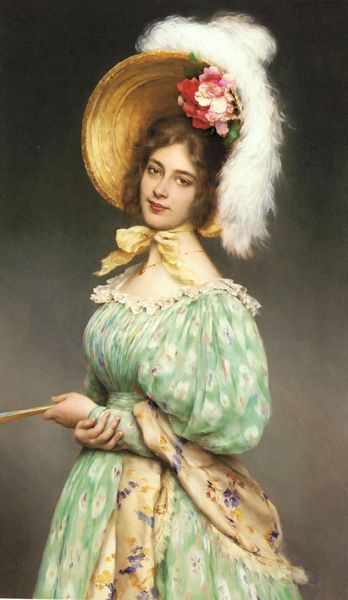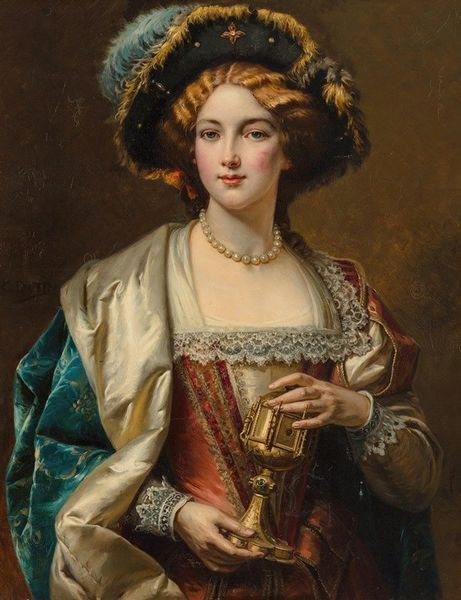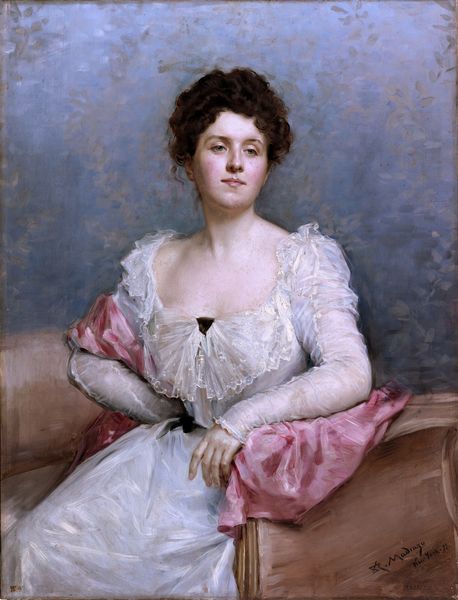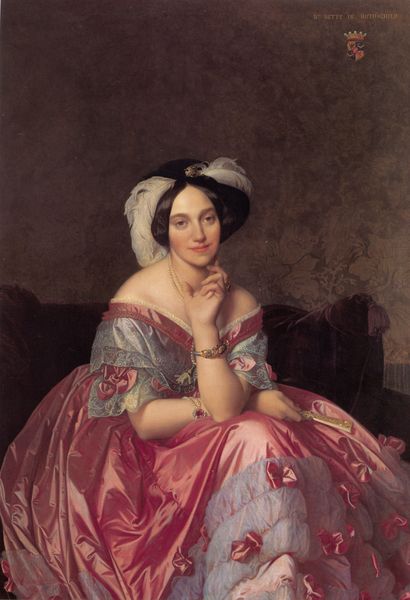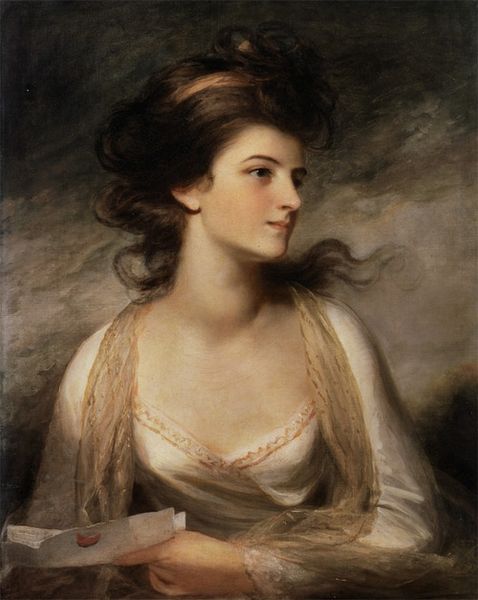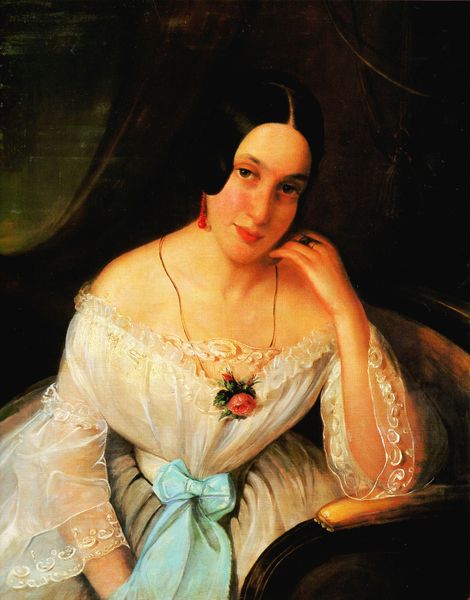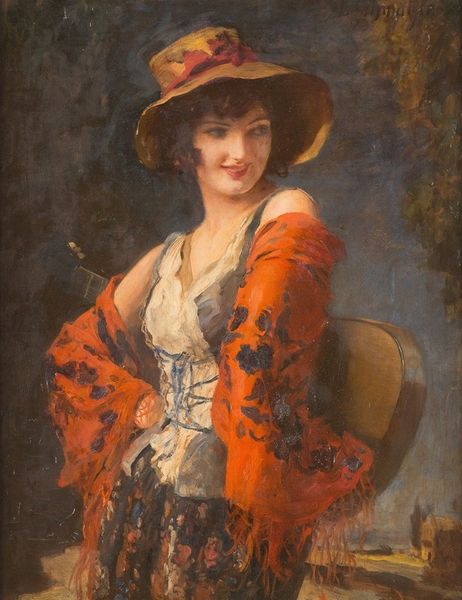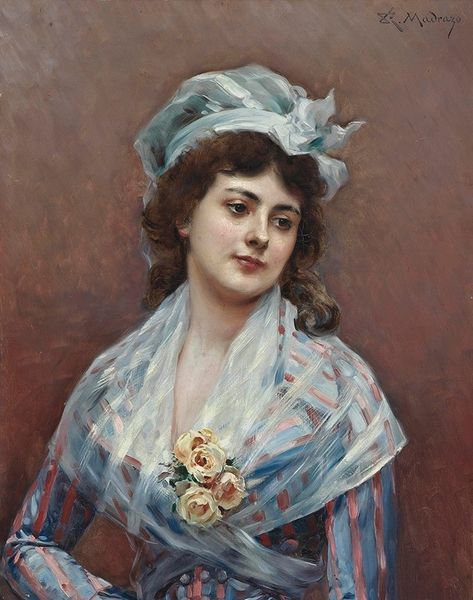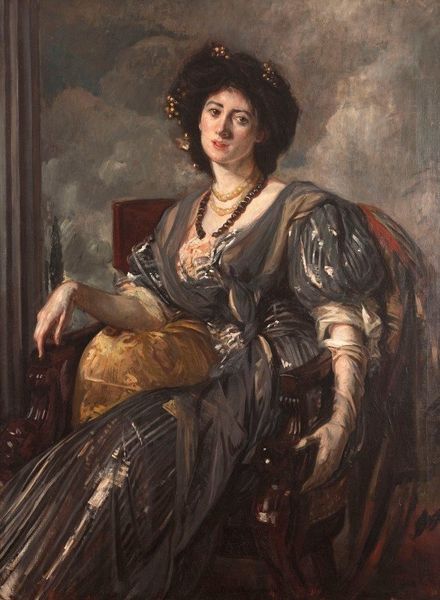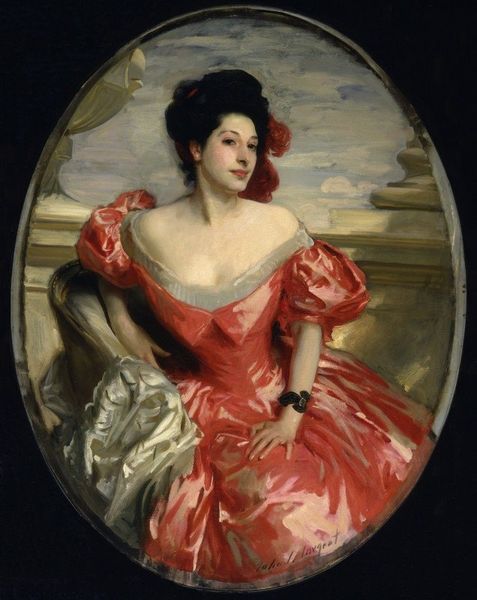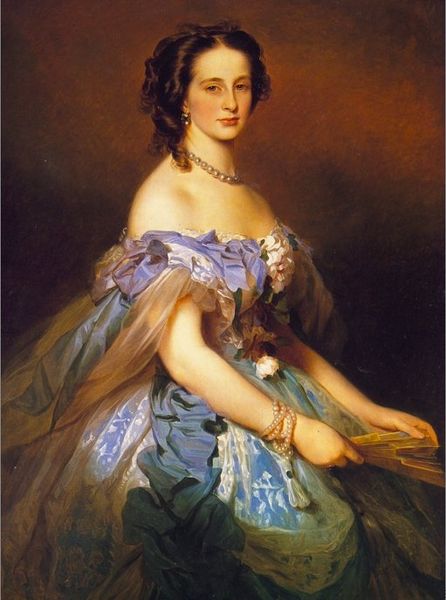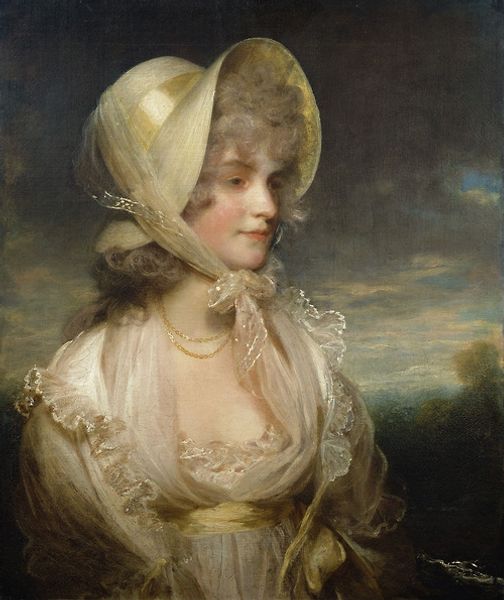
Copyright: Public Domain: Artvee
Curator: Oh, this is just fabulous! Look at "At the Opera," painted by Eugen von Blaas around 1899. Don't you just want to know everything about her? Editor: It’s giving confectionery, doesn't it? All those pastel shades, frothy textures, it makes me think of the labor involved in creating all this finery... the fabrics, the dyes, the plumes. Curator: I'm so glad you noticed that, because truly, that’s the essence of Von Blaas! There's a bit of artifice, a confection in fact: she’s a proper romantic heroine, utterly composed. Editor: But is it? Those massive sleeves suggest industrial looms working overtime. And think about that feathery hat... How many birds paid the price for that particular fashion statement? What kind of industry enables this consumption? Curator: Oh, morbid, but you make a good point! Though, can't we revel in the beauty of the oil on canvas first, you old materialist? Think about it; Eugen's style echoes the Romantic movement. The light, the idealization of beauty... it sings. Editor: Of course, there's an aesthetic appeal, a calculated use of light and form as you said. I suppose I wonder if celebrating "beauty" in this way doesn't sanitize the conditions that make such beauty accessible only to a select few. Is it "beauty" or beautiful "commodity"? Curator: You're making me rethink my day at the opera... But that's what makes great art, isn't it? Shifting our perspective, allowing us to engage. Editor: Exactly! By understanding the complex network of hands and machines that constructed that "beautiful commodity" painted so realistically, we recognize the narrative of production that underpins this…moment. Curator: Well said! It seems Von Blaas, even unwittingly, captures more than just a pretty face. It really offers an interesting reflection of its time! Editor: Indeed. So next time you pass a millinery shop, pause to reflect!
Comments
No comments
Be the first to comment and join the conversation on the ultimate creative platform.
